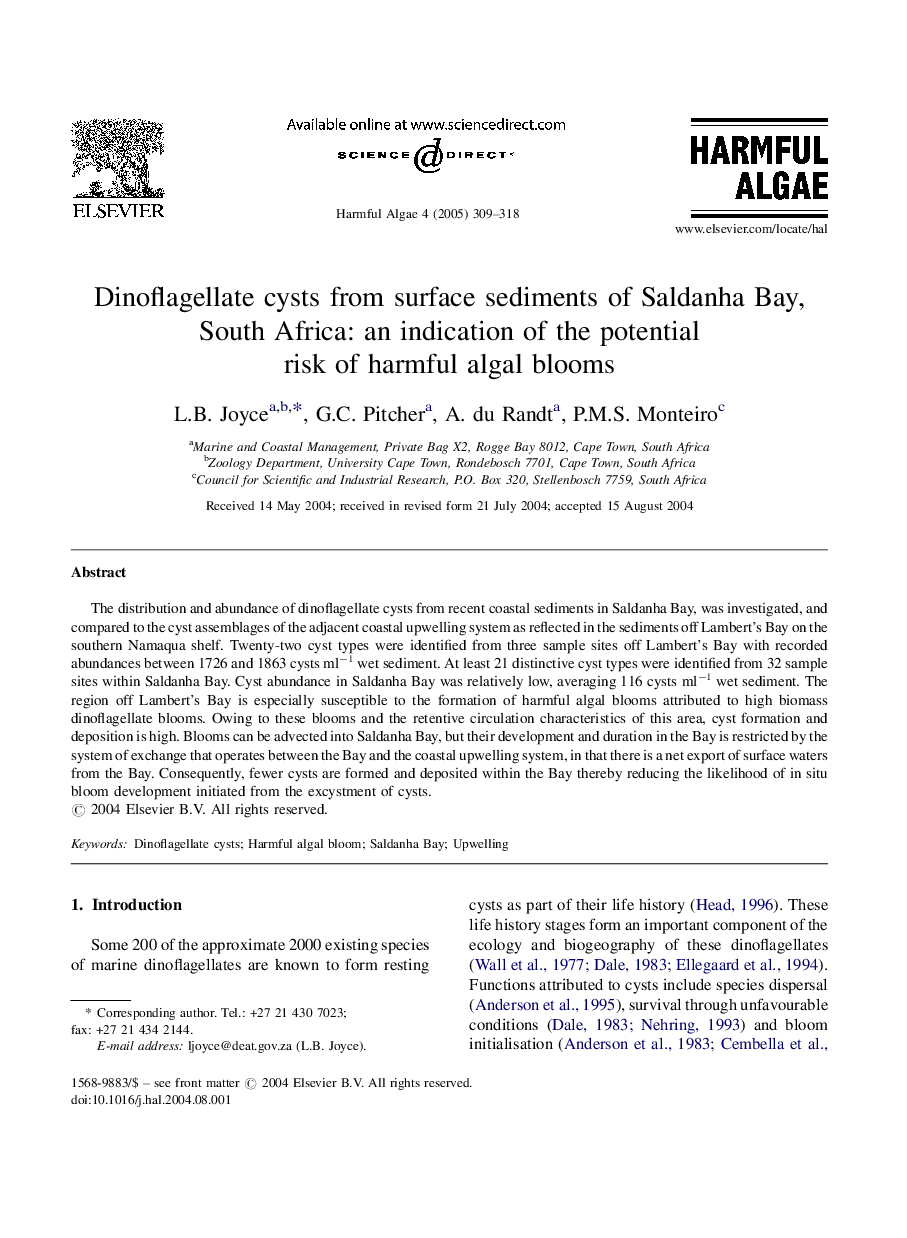| Article ID | Journal | Published Year | Pages | File Type |
|---|---|---|---|---|
| 9482709 | Harmful Algae | 2005 | 10 Pages |
Abstract
The distribution and abundance of dinoflagellate cysts from recent coastal sediments in Saldanha Bay, was investigated, and compared to the cyst assemblages of the adjacent coastal upwelling system as reflected in the sediments off Lambert's Bay on the southern Namaqua shelf. Twenty-two cyst types were identified from three sample sites off Lambert's Bay with recorded abundances between 1726 and 1863 cysts mlâ1 wet sediment. At least 21 distinctive cyst types were identified from 32 sample sites within Saldanha Bay. Cyst abundance in Saldanha Bay was relatively low, averaging 116 cysts mlâ1 wet sediment. The region off Lambert's Bay is especially susceptible to the formation of harmful algal blooms attributed to high biomass dinoflagellate blooms. Owing to these blooms and the retentive circulation characteristics of this area, cyst formation and deposition is high. Blooms can be advected into Saldanha Bay, but their development and duration in the Bay is restricted by the system of exchange that operates between the Bay and the coastal upwelling system, in that there is a net export of surface waters from the Bay. Consequently, fewer cysts are formed and deposited within the Bay thereby reducing the likelihood of in situ bloom development initiated from the excystment of cysts.
Related Topics
Life Sciences
Agricultural and Biological Sciences
Aquatic Science
Authors
L.B. Joyce, G.C. Pitcher, A. du Randt, P.M.S. Monteiro,
